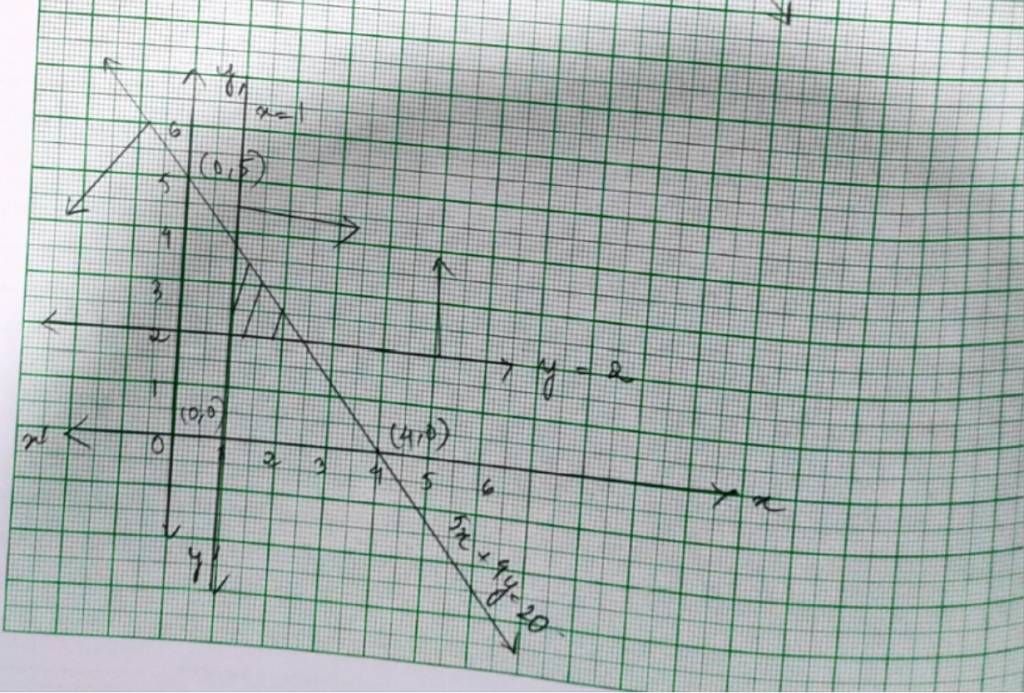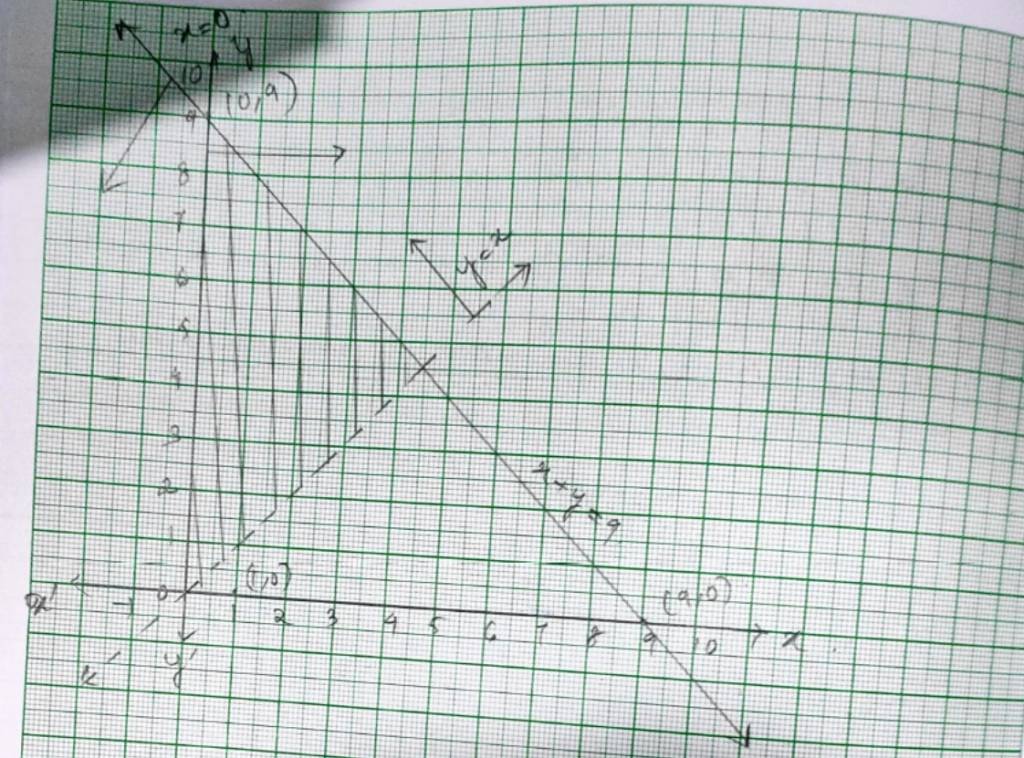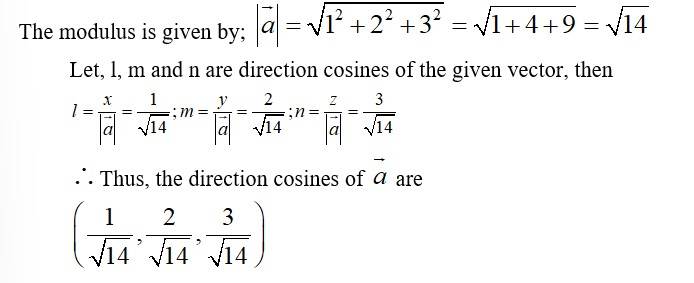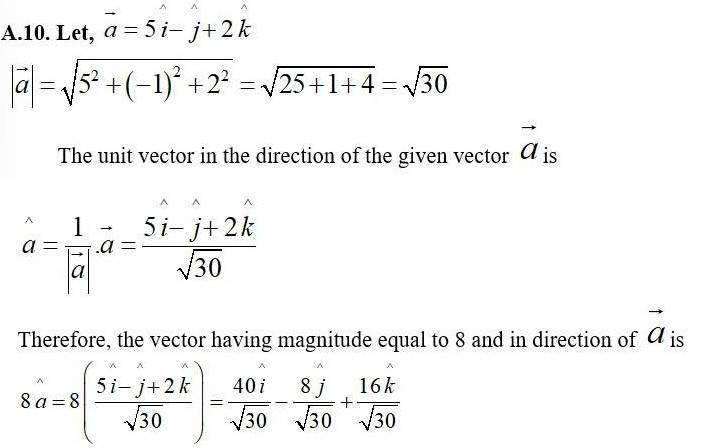Maths
Get insights from 6.5k questions on Maths, answered by students, alumni, and experts. You may also ask and answer any question you like about Maths
Follow Ask QuestionQuestions
Discussions
Active Users
Followers
New answer posted
6 months agoContributor-Level 10
The Position vector of mid-point R of the vector joining point P (2,3,4) and Q (4,1, -2) is given by;
New answer posted
6 months agoContributor-Level 10
(i) The position vector of point R dividing the join of P and Q. internally in
the ratio 2:1 is,
(ii) The position vector of the point k dividing the join of P and Q. externally in the ratio 2:1
A15. (ii)
New answer posted
6 months agoContributor-Level 10
Given, A(1,2,-3) and (-1,-2,1)
Now,
Then,

Let, l, m, n be direction cosine,
Therefore, direction cosine of are
New answer posted
6 months agoContributor-Level 10
Let,
It is seen that
Where,
Therefore, we can say that the given vector are collinear.
New answer posted
6 months agoContributor-Level 10
45. The given system of inequality is
5x+4y≤ 20 - (1)
x≥ 1 - (2)
and y≥ 2 - (3)
The equation of inequality (1) is 5x+4y=20.
x | 4 | 0 |
y | 0 | 5 |
Putting (x, y)= (0,0) in inequality (1) we get,
5 * 0+4 * 0 ≤ 20 => 0 ≤ 20 which is true.
So, the solution region of inequality (1) includes the plane with origin (0,0).
∴ The shaded region indicates the solution of the given system of inequality.

New answer posted
6 months agoContributor-Level 10
44. The given system of inequality is
x+y≤ 9- (1)
y>x- (2)
x≥ 0 - (3)
The corresponding equation of (1) is x+y=9 and (2) is y=x
x | 9 | 0 |
y | 0 | 9 |
x | 0 | 1 |
y | 0 | 1 |
Substituting (x, y)= (0,0) in (1),
0+0 ≤ 9 => 0 ≤ 9 which is true.
And putting (1,0) in (2)
0> 1which is false.
So, solution region of inequality (1) includes origin (0,0) and solution region of inequality (2) excludes plane having (1,0).
? Solution of region of given system of inequality is the shaded region.

Taking an Exam? Selecting a College?
Get authentic answers from experts, students and alumni that you won't find anywhere else
Sign Up on ShikshaOn Shiksha, get access to
- 65k Colleges
- 1.2k Exams
- 679k Reviews
- 1800k Answers





